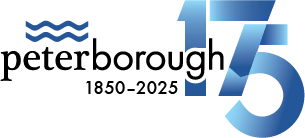The Assessment of Parks and Open Space study began in July 2018 to provide a comprehensive review of the City’s parks and open space system and to establish a park planning process as identified in Vision 2025 - a Ten-Year Strategy for Recreation, Parks, Arenas and Culture (completed in 2016).
This study concluded in October 2019 resulting in The Municipal Parks and Open Space Study Final Report that was presented to the Arena, Parks and Recreation Advisory Committee through Report APRAC19-019 dated October 22, 2019 for endorsement prior to the final presentation to Council through Report CSRS20-003 dated February 3, 2020. Council received the final presentation and adopted in principle the Assessment of Parks and Open Spaces document and the Park Development Standards document to be used to develop policies and guide priorities related to the development of municipal parks and open space.
The Assessment of Parks and Open Spaces document sets out the current state of the parks to be rejuvenated and recommends solutions to improve access to and quality of the existing parkland. The review involved the assessment of the quality and functionality of the City’s 79 existing Neighbourhood parks (including 12 embedded Neighbourhood parks within higher level parks). This list of minimum park features is the requirement for new parks and provides the template for upgrading existing parks. The plan to systematically improve existing neighbourhood parks utilizes the ‘minimum’ and ‘variable’ design features and standards for rejuvenation recommended in the Assessment of Parks and Open Spaces document and the Parks Development Standards document.
Parks and Outdoor Facilities Project
This project will expand upon and provide more detail to help implement parts of Vision 2025 – A Ten-Year Strategic Plan for Recreation, Parks, Arenas and Culture (completed in 2016). It will be informed by the Parks and Open Spaces Assessment and the Park Development Standards document, both completed in 2019.
The project has been organized into the following components:
- Background Research and Assessment,
- Neighborhood Parks,
- Long-Term Strategies for the Provision of Selected Types of Outdoor Culture and Recreation Facilities, and
- Regional and Community Parks.
The Background Research and Assessment component comprises:
- The planning context (current and anticipated future population, and settlement pattern);
- Update of supply, focusing on parkland and the types of outdoor facilities included in the study;
- Demand research (existing unmet and anticipated); and
- Analysis and conclusions.
Neighbourhood Parks
The 2019 Parks and Open Spaces Assessment examined the quality and functionality of every neighbourhood park. Also, neighbourhood parkland distribution, access and park equity were assessed. Based on this assessment, neighbourhood parks were prioritized for rejuvenation. For each of the City’s 24 residential Planning Areas, a comprehensive strategy for improvement to the neighbourhood park system was recommended.
In 2019, a Park Development Standards document was prepared to guide the rejuvenation of existing parks and the planning and development of new ones.
Recently, the need has been identified to determine the most effective way to communicate the key findings and recommendations of the Parks and Open Spaces Assessment report + the Park Development Standards document to municipal staff, City Council, the Arenas Parks Recreation and Advisory Committee (APRAC) and the community. A priority aspect of this task will be to explain how annual decisions will be made regarding how neighbourhood park rejuvenation will be implemented.
An associated task will be to prepare a procedure document to explain how unsolicited requests for park improvements and unsolicited requests for the provision of specific culture and recreation facilities will be fairly and effectively processed, including the creation of a community input portal, identification of the most appropriate department and municipal staff point-of-contact, and an effective decision-making process.
There is also a need to determine the most effective way to support community engagement regarding natural heritage stewardship when new parks are being planned and existing ones are being rejuvenated.
Facility Provision Strategies
Twenty-two different types of outdoor recreation facilities will be combined into eleven facility provision strategies. Each strategy will provide an assessment of facilities and a map that illustrates facility location and distribution. Each strategy will also report on what is known about current unmet and anticipated demand and recommend a game plan to improve existing and expand the number of new facilities to meet the anticipated full build-out population of the city. A second map will illustrate what facilities will be improved and where future facilities should be located.
Regional and Community Parks
The facility provision strategies will look for existing and future parks and other locations where the recommended facility improvements and expansion can be achieved, including existing Regional and Community parks. All eleven Regional and 18 of the city’s Community parks have been identified as sites that may be able to support some of the recommended facility improvements and expansion. To determine the potential for any of these parks to support facility improvements and/or expansion, an analysis of existing conditions will be undertaken – focusing on opportunities and constraints. Other improvements will be recommended for each park, using the Park Development Standards document as the principal guide.
Basterfield & Associates - Landscape Architects and The Rethink Group – Leisure Services Planning and Management are assisting the City with this project.
If you have questions or would like to provide input, please email the Recreation Division.
Reports:
